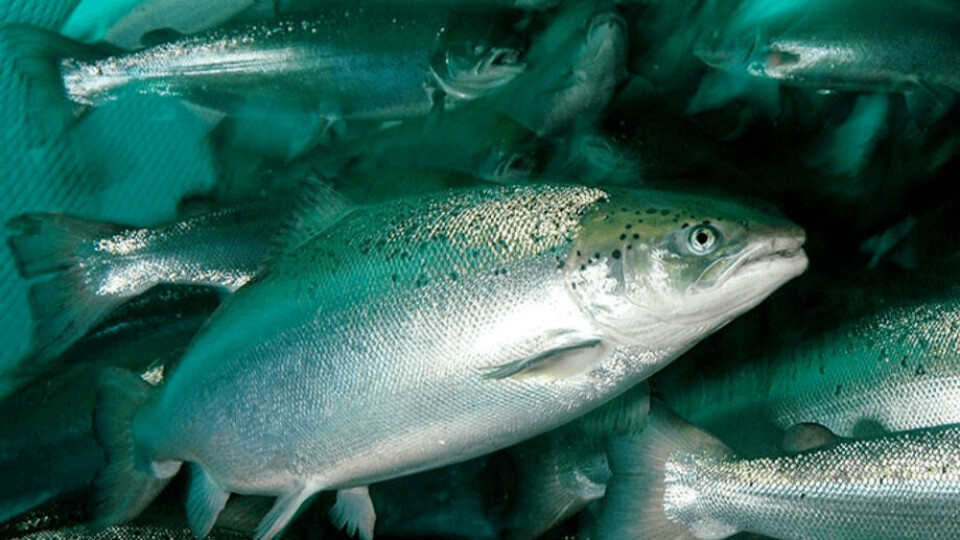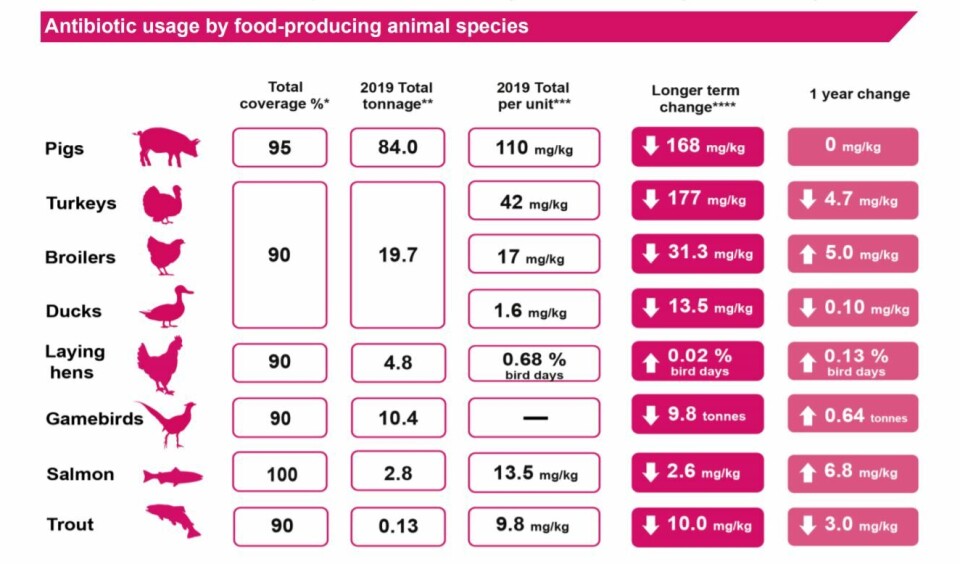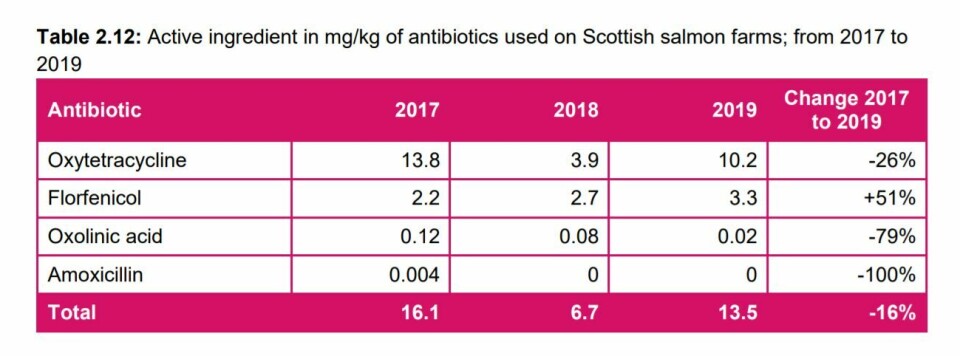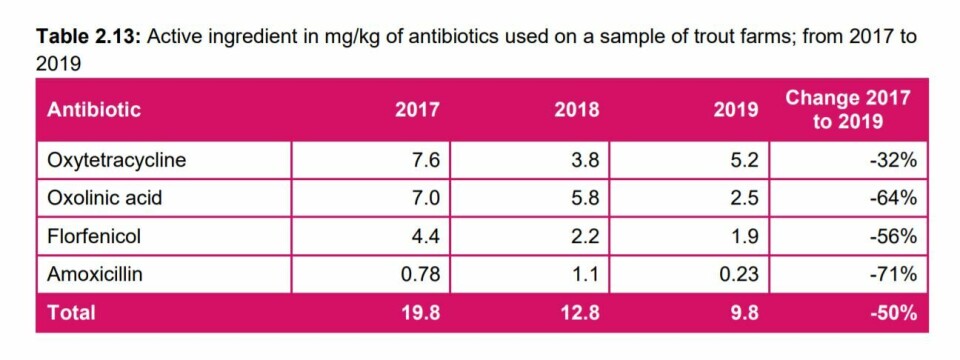
Salmon antibiotic use up but still among lowest in farming
Salmon and trout farmers remained among the lowest users of antibiotics in the UK animal protein industry last year, new figures from the UK government’s Veterinary Medicines Directorate (VMD) show, although salmon farmers used more of the medicines than in 2018.
Farmed salmon were given an average of 13.5 milligrams of antibiotics per kilo, and farmed trout received 9.8 mg/kg.
This compares favourably to 110 mg/kg for pigs, 42 mg/kg for turkeys, 17 mg/kg for chickens, 22.5 mg/kg for dairy cattle and 24.4 mg/kg for beef cattle. The figure for beef cattle is based on a sample of just 5.6% of the population and may be less accurate than those for other animals. There were no figures for sheep.

Improvement for trout
Fish farming’s figures are more impressive given that the UK remains the lowest user of antibiotics amongst European countries with significant livestock farming and the fifth lowest user overall.
The trout industry’s figure showed a continuing decrease in antibiotic use, down by 3 mg/kg from 2018 and by 10 mg/kg compared to 2017.
Salmon farming’s antibiotic use was double the 6.7 mg/kg used in 2018, but lower than the 16.1 mg/kg used in 2017, according to the UK Veterinary Antibiotic Resistance and Sales Surveillance Report.
Oxolinic acid
There was a 79% fall in the sector’s use of oxolinic acid, which has since been classified as a Highest Priority Critically Important Antibiotic (HP-CIA). Vets have been urged not to use HP-CIAs in animals so that bacteria do not develop resistance to the drugs, which are particularly important to human healthcare.
In his introduction to the report, VMD chief executive Professor S Peter Borriello said this move to less potent antibiotics may in part explain a small increase in total antibiotic use in animals last year.

‘Usage fluctuates’
Salmon farming’s use of oxolinic acid fell from 0.08 mg/kg to 0.02 mg/kg but use of oxytetracycline rose from 3.9 mg/kg to 10.2 mg/kg, and florfenicol use rose from 2.7 mg/kg to 3.3 mg/kg.
In a statement included in the report, the Scottish Salmon Producers’ Organisation said: “Antibiotic use has increased in 2019 compared with 2018, but use remains lower than in 2017. As highlighted by recent use figures and historical sales data, usage in the sector can fluctuate year-on-year. This is due to a number of factors, notably challenging environmental conditions and differences between use in the freshwater and marine stages of production.
“The 2019 figure is above the ambitious target set by the sector, to keep usage in the salmon industry below 5 mg/kg. The sector remains committed to focus on preventative medicine and only use antibiotics when absolutely necessary in order to maintain fish health and welfare.”

Widespread vaccination
The trout sector recorded a rise in oxytetracycline use but falls in the use of oxolinic acid, florfenicol and amoxicillin.
“The data show that usage in this large sample of trout farms has reduced again in 2019 and remains below the sector target of using less than 20 mg/kg,” the British Trout Association said in a statement included in the report.
“This reflects the commitment of the trout sector to focus on biosecurity and good management practices, including widespread vaccination, in order to minimise the use of antibiotics. It is also partly linked to a shift in the market towards larger fish.
“There is no prophylactic use in the trout sector and so antibiotics are only used when needed to treat disease as outlined in the Veterinary Health Plan. Oxolinic acid has also reduced but remains vital for the treatment of specific diseases in the trout sector, in particular Enteric Redmouth (Yersinia. ruckeri).”





















































